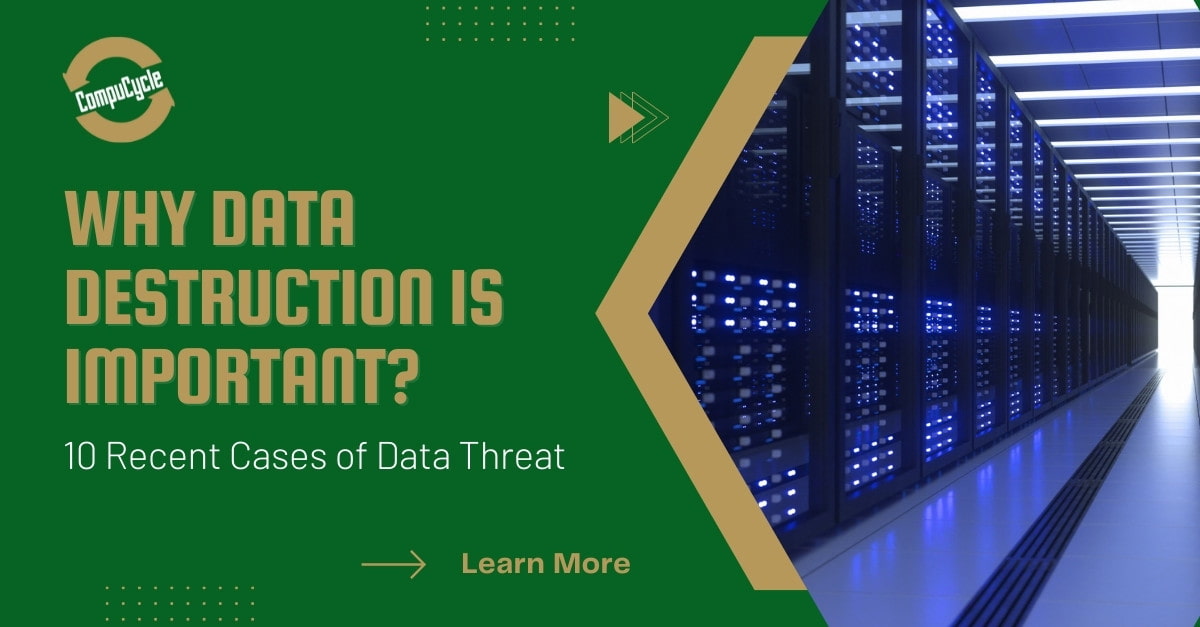Understanding the Duty of Data Destruction in Fortifying Cyber Security Defenses
Understanding the Duty of Data Destruction in Fortifying Cyber Security Defenses
Blog Article
The Vital Nature of Information Devastation in Upholding Computer Safety Providers and Protecting Against Unauthorized Accessibility
In an age where information breaches and identification theft are increasingly prevalent, the significance of reliable information damage can not be overstated. Various methods, from information wiping to physical destruction, offer as important safeguards against unauthorized gain access to.
Relevance of Data Devastation
In a progressively digital globe, the value of data devastation can not be overstated. As companies collect large quantities of sensitive details, the prospective consequences of falling short to effectively dispose and take care of of that data end up being significantly severe. Data breaches, identification theft, and business reconnaissance present substantial threats, emphasizing the necessity of reliable information devastation techniques.

In addition, as modern technology progresses, so too do the methods by which destructive actors look for to make use of sensitive details. Organizations has to stay positive and vigilant in their data damage approaches to protect versus these advancing threats. By prioritizing data damage, companies not just secure their assets but likewise foster trust among clients and stakeholders, showing a commitment to accountable data monitoring and protection techniques.
Methods of Effective Data Damage
To guarantee the irreparable and complete damage of sensitive data, organizations can employ a range of effective approaches tailored to their details demands. Among one of the most usual approaches is information wiping, which entails making use of specialized software to overwrite existing information several times, making healing virtually difficult. This is especially beneficial for hard disks and solid-state drives, where typical removal methods are poor.
One more reliable strategy is degaussing, which utilizes strong magnetic fields to interrupt the magnetic domains on storage media, providing the information irretrievable. This method is particularly matched for magnetic storage devices, such as tape drives and hard drives.
Physical destruction is additionally a practical choice, involving the shredding, squashing, or incineration of storage gadgets. This technique assurances that information can not be recuperated, making it perfect for organizations dealing with highly delicate information.

Compliance With Data Security Regulations
Organizations need to not only concentrate on efficient data destruction techniques yet also make sure compliance with data protection regulations that control just how delicate details is taken care of and taken care of. Sticking to these guidelines is necessary for securing personal information and preserving client trust fund. Regulations such as the General Data Protection Law (GDPR) in the European Union and the Medical Insurance Mobility and Responsibility Act (HIPAA) in the USA impose rigorous guidelines on data monitoring, which include needs for the safe and secure disposal of delicate details.
To achieve conformity, organizations must carry out extensive data damage policies that align with these lawful structures. This includes This Site determining information that needs damage, establishing procedures for secure methodsâEUR" such as shredding physical media or utilizing software program that satisfies sector criteria for data wipingâEUR" and keeping thorough records of damage tasks. Normal audits needs to be carried out to make certain adherence to these plans and to identify any type of prospective areas for enhancement.
Failure to abide by information defense policies can result in significant lawful implications, consisting of hefty penalties and damages to a company's online reputation. Therefore, integrating compliance right into information damage methods is not just a legal commitment however additionally an important element of a durable information safety approach.
Repercussions of Poor Information Handling
Poor information handling can lead to severe effects that extend beyond immediate functional obstacles. Organizations may face substantial monetary losses because of information violations, which typically cause costly removal efforts, lawful charges, and regulative fines. These economic implications can stress sources and impede growth, ultimately affecting an organization's bottom line.
Moreover, bad data handling can badly damage an organization's reputation. Stakeholders, consumers, and partners might shed rely on an entity that stops working to shield delicate info, causing reduced client commitment and possible loss of company opportunities. This disintegration of trust can take years to reconstruct, if it can be brought back whatsoever.
In addition, organizations could deal with lawful implications occurring from non-compliance with information protection laws. Such offenses may cause charges and investigations, worsening the economic concern Extra resources and further tarnishing the company's picture.
In the realm of cybersecurity, insufficient information monitoring practices can develop vulnerabilities that make systems much more at risk to unapproved access and cyberattacks. Ultimately, these effects underscore the important importance of executing robust information handling procedures to secure sensitive details and maintain organizational integrity.
Finest Practices for Secure Information Disposal


To start with, information ought to be categorized according to its sensitivity. Delicate info requires more extensive disposal approaches, such as shredding physical records and using innovative software application for digital information wiping. Employing licensed information damage solutions makes sure conformity with market guidelines and criteria.
Secondly, organizations should apply a data disposal policy that mandates normal audits. This plan needs to lay out the treatments for data retention and devastation, guaranteeing that outdated information is disposed of quickly and firmly. Educating workers on these protocols is necessary to link fostering a culture of safety and security awareness.
Finally, keeping comprehensive records of disposed information enhances liability and gives a clear audit trail. This documentation should consist of the sort of information destroyed, the approach made use of, and the day of disposal.
Final Thought
Adopting durable approaches such as data wiping, degaussing, and physical destruction, together with conformity with regulations like GDPR and HIPAA, is essential for safeguarding sensitive info. Disregarding appropriate information disposal practices can lead to extreme effects, consisting of data violations and legal repercussions.
In a period where information breaches and identity theft are progressively common, the relevance of effective data devastation can not be overemphasized. data destruction. Information violations, identification theft, and business reconnaissance present considerable threats, underscoring the necessity of efficient information destruction practices
Conformity with regulations such as GDPR and HIPAA requireds that companies apply stringent information security measures, consisting of the secure destruction of information at the end of its lifecycle.
By prioritizing data damage, business not just safeguard their properties however likewise foster trust among clients and stakeholders, demonstrating a commitment to responsible data administration and safety and security practices.
Organizations have to not only concentrate on reliable data damage methods however additionally make certain conformity with information protection policies that regulate just how delicate details is managed and disposed of.
Report this page